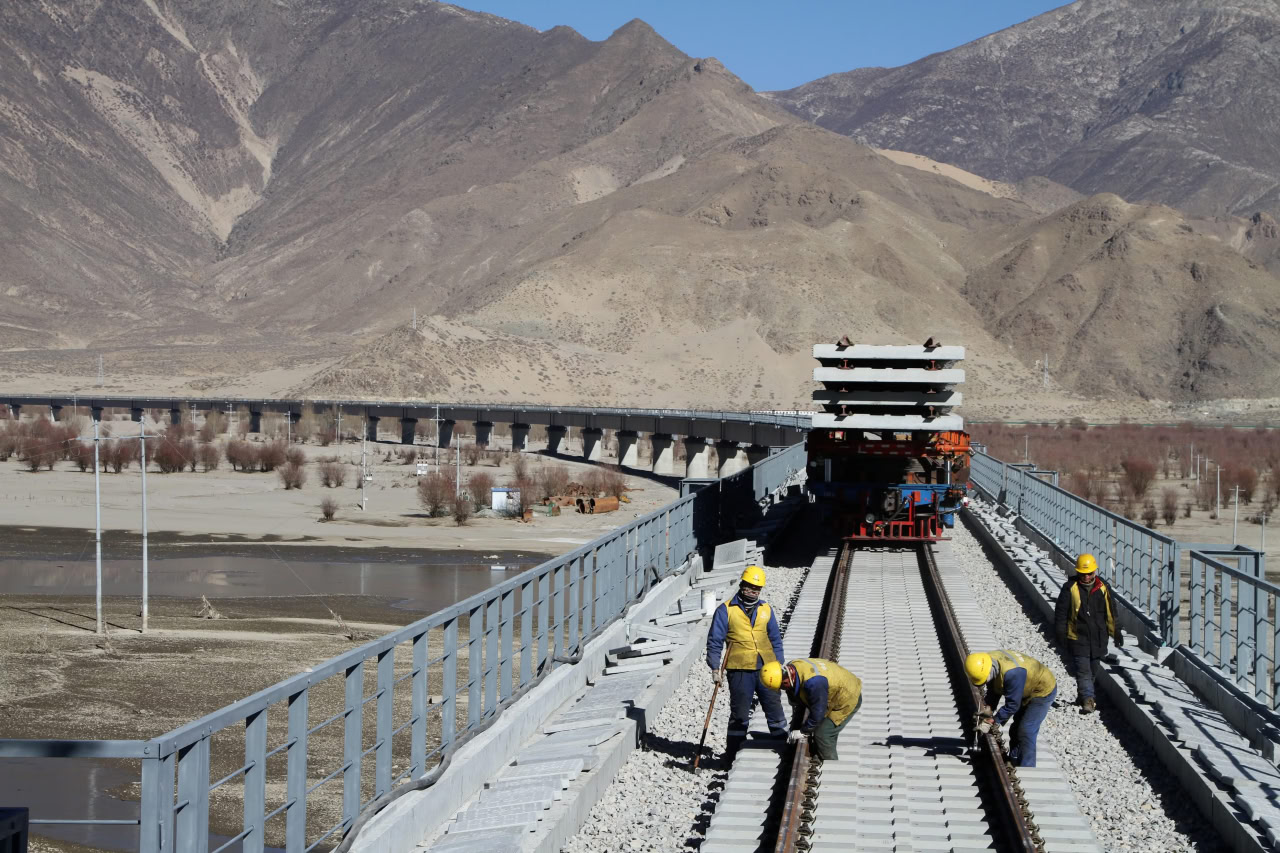At 10,000 Feet High, China’s New Hydropower Dam Could Change Asia’s Water Politics Forever

The $137 billion Midog Dam project in Tibet is more than an engineering feat — it’s a geopolitical earthquake waiting to happen.
High in the unforgiving terrain of the Tibetan Plateau, where the air is thin and the rivers run wild with glacier-fed power, China is laying the foundations of what could become the world’s most ambitious hydroelectric project. Known as the Midog (or Motuo) Hydropower Plant, this project is being carved into the heart of the Yarlung Tsangpo Grand Canyon — a place deeper and longer than even America’s Grand Canyon.
But this isn’t just a story about engineering marvels. It’s a story about power — electrical, political, and geopolitical. Because when a river that starts in Tibet becomes the Brahmaputra in India and flows into Bangladesh, what China does upstream doesn’t stay upstream.
A River With Many Names — and Many Consequences
The Yarlung Tsangpo is born from the icy glaciers of Tibet and cuts through some of the most complex geological formations on Earth. In India, it becomes the Brahmaputra, a lifeline for millions across Arunachal Pradesh, Assam, and beyond. And as it enters Bangladesh, it nourishes the floodplains that sustain the country’s agriculture and drinking water supply.
This river, then, is not just water — it is life. And when China builds a massive dam system on it, the stakes become existential for those downstream.
The Midog Dam: China’s Most Ambitious Energy Gamble
So what exactly is China building?
The Midog Hydropower Plant is not your average dam. Approved in December 2024, it is projected to be operational by 2033 and may eventually generate an eye-watering 60 GW of power — nearly three times the output of the Three Gorges Dam, the current record-holder.
To achieve this, Chinese engineers plan to drill four tunnels — each 12 miles long — through the Namcha Barwa mountain range, channeling water down steep gradients to power turbines with unprecedented efficiency. It’s a $137 billion project — more than the GDP of some countries — and involves working in one of the most seismically active and geologically unstable regions in the world.
It’s an audacious move. But the question is: audacious for whom?
When Engineering Meets Earthquakes
Geopolitically, the Himalayas are a high-wire act. The Indian and Eurasian tectonic plates are still colliding, making the region one of the most earthquake-prone areas on the planet. In January 2025, a 7.1 magnitude quake shook Tibet, destroying thousands of buildings and entire villages.
The thought of a concrete megastructure — weighing millions of tons — cracking or collapsing in such a landscape is not just frightening. It’s catastrophic.
Because a failure wouldn’t just affect China.
Downstream lies India. Then Bangladesh.
A broken dam here would mean a wall of water crashing through rice fields, cities, bridges, and lives. And even if the dam holds, the seismic risk remains a looming shadow over millions.
Control Over Water = Control Over Nations?
Here’s the kicker: Even if the Midog Dam functions perfectly, it still gives China a spigot on South Asia’s water supply.
In the dry season, up to 30–35% of the Brahmaputra’s flow originates in China. During glacial melts, that percentage increases. If China decides to withhold water, India’s northeastern states could face devastating droughts. If China suddenly releases water, it could unleash flash floods.
And there’s no treaty in place to stop that from happening.
In a time of rising geopolitical tension between Beijing and New Delhi, this isn’t just a hypothetical. It’s a tool of leverage. A pressure point.
India, aware of the risk, has proposed its own countermeasures — including the Upper Siang Hydropower Project on its side of the river. But two dams on one river? That’s not balance. That’s a potential disaster.
Farmers and Fishermen: The First to Suffer
While world leaders debate policies and build megastructures, the real cost of disruption is felt by ordinary people.
In Assam, millions depend on the Brahmaputra for drinking water, farming, and fishing. One farmer in the region said if water levels drop during the sowing season, a third of his crop fails — and his income vanishes with it.
Multiply that by hundreds of thousands of farmers and it becomes clear: any small change in water flow is not just an inconvenience. It’s a humanitarian crisis in slow motion.
If China tightens the flow during a dry year, and Indian farmers upstream grab what little water remains, what will be left for Bangladesh, the final recipient of the river?
Bangladesh: The Silent Victim?
Often left out of the geopolitical conversation, Bangladesh may end up suffering the most. Already vulnerable to flooding and water scarcity, the country lies at the very tail end of the river system. Whatever water is withheld upstream or used excessively in India means even less reaches Dhaka’s fields and cities.
In years of poor monsoons, when glacial runoff matters more than ever, Bangladesh may find itself caught between two giants fighting over control — with little say and no leverage.
Environmentalists and Engineers Face Off
It’s not just nations that are worried. Environmentalists are ringing alarm bells too.
Dams fragment rivers, affect fish migration, alter sediment flows, and can permanently change local ecosystems. And while China insists it will deploy real-time monitoring and advanced tunnel-boring machines to mitigate environmental and geological risk, there is no such thing as a truly eco-friendly megadam.
Moreover, the very remoteness and wildness of this region is what makes it so precious. The more we industrialize the last untouched corners of the Earth, the less of it we preserve for future generations.
Engineering Feat or Political Powder Keg?
From a purely technical standpoint, what China is attempting is astonishing. To drill through hostile mountains and tame one of the world’s wildest rivers for 60 gigawatts of power is something even science fiction writers would hesitate to script.
But energy doesn’t exist in a vacuum.
The Midog Dam doesn’t just represent progress — it represents control.
Control over rivers. Over resources. Over regional politics.
Without formal agreements, without water-sharing treaties, and without transparency, this project could tilt the balance of water — and power — across South Asia.
The Clock Is Ticking
As of now, there is no concrete diplomatic solution. The Midog Dam is being built. India is still debating its response. Bangladesh is watching — nervously — from the sidelines.
And the river? The river keeps flowing. For now.
Because in the battle between concrete and current, history has shown that it’s never just about water. It’s about who controls it.




I hadn’t realized just how strategic the Tibetan Plateau is when it comes to water politics. With this dam, China isn’t just generating electricity — it’s also shaping future leverage in regional diplomacy.
It’s fascinating how the Midog Dam could change the course of water access in India and Bangladesh. If China controls the flow upstream, the downstream countries could face major challenges. What steps could India and Bangladesh take to ensure their interests are safeguarded?